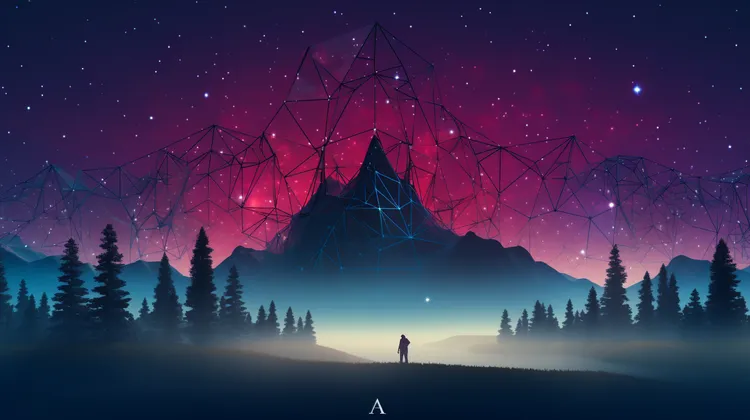
Cardano: A Beginners’ Guide to $ADA Ecosystem
Cardano, often referred to as the “third-generation blockchain,” is a decentralized platform that aims to provide a secure, scalable, and sustainable blockchain ecosystem. With its native cryptocurrency $ADA, Cardano seeks to offer a more inclusive and transparent financial system that is accessible to everyone. In this article, we will explore the ins and outs of the Cardano network and its $ADA ecosystem to help beginners understand this groundbreaking technology.
1. Understanding Cardano: Cardano was developed by IOHK, a blockchain research and development company, with the intention of improving upon the limitations of existing blockchain platforms. It was created by a team of experts in various fields, including cryptography, computer science, and engineering.
2. Proof-of-Stake Consensus Algorithm: Unlike Bitcoin’s energy-intensive Proof-of-Work mechanism, Cardano utilizes a unique Proof-of-Stake consensus algorithm called “Ouroboros.” This algorithm is designed to ensure security, scalability, and energy efficiency, making Cardano a more sustainable blockchain network.
3. Layers and components: Cardano is comprised of two main layers: the Cardano Settlement Layer (CSL) and the Cardano Computation Layer (CCL). The CSL handles financial transactions, while the CCL enables developers to build and deploy applications on the network.
4. Smart Contracts: One of Cardano’s key features is its ability to support smart contracts, which allow for the creation of decentralized applications (DApps). Smart contracts automate agreements, removing the need for intermediaries and enabling peer-to-peer transactions.
5. The $ADA Cryptocurrency: $ADA is the native cryptocurrency of the Cardano network. It plays a vital role in maintaining network security, participating in the consensus algorithm, and governing the Cardano ecosystem through on-chain voting.
6. Staking $ADA: Cardano allows users to stake their $ADA tokens, which involves keeping them in a designated wallet to support the network’s operations and security. In return, stakeholders receive rewards in $ADA.
7. Decentralized Governance: Cardano aims to be a community-driven platform, where the stakeholders have a say in the network’s development and decision-making process through a decentralized governance mechanism. This ensures that no central authority can control or manipulate the protocol.
8. Scalability and Interoperability: Cardano aims to address the scalability challenges faced by many blockchain networks by employing a layered architecture and sidechains. This approach allows for the seamless integration of various applications and offers enhanced scalability and interoperability.
9. Ongoing research and development: Cardano is continuously evolving through rigorous research and development efforts. Its team of scientists and engineers actively engages with academia, industry experts, and the global blockchain community to drive innovations and enhancements to the protocol.
10. Future Potential: As of now, Cardano has experienced considerable growth and adoption, with a vibrant community of developers and supporters. With ongoing developments, partnerships, and real-world use cases, Cardano has the potential to become a significant player in the blockchain industry.
Cardano and its $ADA ecosystem are well-positioned to revolutionize the blockchain landscape. With its sustainable approach, cutting-edge technology, and inclusive governance, Cardano offers a compelling platform for developers, businesses, and individuals alike. Whether you are a newcomer to the world of cryptocurrencies or an experienced blockchain enthusiast, exploring the Cardano network and its $ADA ecosystem is undoubtedly worth considering.
11 thoughts on “Cardano: A Beginners’ Guide to $ADA Ecosystem”
Leave a Reply
You must be logged in to post a comment.
With its significant growth, vibrant community, and real-world use cases, Cardano has the potential to be a major player in the blockchain industry. I can’t wait to see what the future holds! 💪
Decentralized governance? Yeah right, like that’s ever worked in practice. I’ll believe it when I see it.
Future potential? Yeah, right. I’ve heard that about countless other blockchain projects. Prove it to me first.
The sustainable approach, inclusive governance, and cutting-edge technology make Cardano and its $ADA ecosystem truly worth exploring. I’m excited to dive deeper! 🚀
The $ADA cryptocurrency? More like a waste of money if you ask me. I’ll stick to Bitcoin.
Proof-of-Stake, Proof-of-Work, who cares? They’re all just buzzwords. I’ll believe it when I see it.
Two layers, huh? Sounds unnecessarily complicated to me. Why can’t they just keep it simple?
Staking $ADA tokens to support the network’s operations and receiving rewards in return is such an appealing concept. I’m excited to get involved!
Wow, Cardano seems like a truly groundbreaking technology! I’m amazed by the team behind its development and their expertise in various fields.
Staking $ADA for rewards? Sounds like a pyramid scheme to me. No thank you.
The fact that Cardano has two main layers, the Cardano Settlement Layer and the Cardano Computation Layer, shows how well thought out and versatile it is.